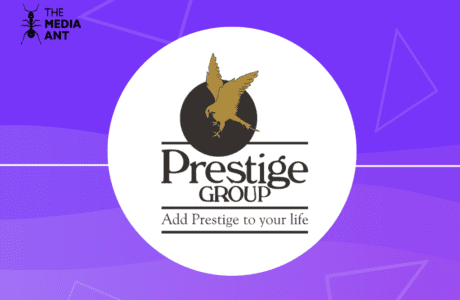Ghadi Detergent’s incredible journey from a regional player to India’s leading detergent brand is a masterclass in strategic marketing and deep consumer understanding. Established in 1987 in Kanpur by the RSPL Group, the brand’s ascent was fueled by its commitment to affordability, relatability, and quality.
Competing with giants like Nirma, Surf Excel, and Wheel, Ghadi took an unconventional path, focusing on grassroots efforts and understanding local market nuances. This blog delves into its inspiring story, breaking down its evolution through impactful year-by-year campaigns.
The Beginning: Laying the Foundation (1987–1999)
1987: The Birth of Ghadi Detergent
The RSPL Group identified a significant gap in India’s detergent market—effective and affordable products for lower-income households. Ghadi was launched to fill this void, focusing on regions where affordability was key.
Key Strategy Elements:
- Offered high-quality detergent at a fraction of the cost of premium brands like Surf Excel.
- Leveraged simple and effective formulations that met the expectations of middle- and lower-income families.
Resulting Impact:
- Rapid acceptance in Kanpur and surrounding areas, driven by word-of-mouth promotion.
- Ghadi became synonymous with reliability and value, earning a foothold in its target market.
1990s: Hyper-Local Advertising
Ghadi eschewed high-cost national advertising in favor of localized marketing tactics that appealed directly to rural and semi-urban audiences.
Tactical Approach:
- Outdoor Advertising: Billboards and posters strategically placed in high-visibility areas like village fairs, local bazaars, and near transport hubs.
- Roadside Exhibitions: Live demonstrations showcasing Ghadi’s cleaning efficacy, building trust with skeptical audiences.
- Grassroots Engagement: Sponsored community events and engaged directly with consumers through informal campaigns.
Expansion Milestones:
- Entered new states like Bihar, Madhya Pradesh, and Punjab, expanding its market presence.
Impact on the Market:
- Built strong brand recall without the need for expensive TV or radio spots.
- Created a loyal customer base that appreciated its affordability and results.
Early 2000s: Building Trust with Iconic Campaigns (2000–2009)
2000: The Slogan That Stuck
Ghadi’s introduction of the tagline “Pehle Istemaal Kare, Phir Vishwas Kare” was a game-changer, reflecting its confidence in product quality and its commitment to winning consumer trust.
Core Idea:
- Encouraged consumers to try the product first and judge its quality themselves, breaking the traditional mold of exaggerated claims in detergent advertising.
- Positioned Ghadi as a no-nonsense, trustworthy brand that delivered results.
Resulting Impact:
- The tagline became a cultural phenomenon, resonating deeply with middle-class and budget-conscious households.
- Triggered product trials, especially in regions unfamiliar with the brand, leading to an exponential increase in loyal customers.
2008: Ghadi Detergent Express
Ghadi adopted an innovative and cost-efficient approach to advertising by branding entire trains.
Execution Details:
- Transformed popular trains like the Pushkar Express into mobile billboards with Ghadi’s vibrant branding.
- Covered key routes to ensure visibility in both urban hubs and rural areas.
Strategic Advantages:
- Reached a massive audience at a fraction of the cost of TV advertising.
- Captured the imagination of daily commuters and long-distance travelers.
Market Outcomes:
- Significantly increased awareness in less-penetrated markets.
- Cemented Ghadi’s reputation as a brand that understood its audience and innovated within its means.
Achieving Market Leadership (2010–2014)
2012: Dethroning the Giant
Ghadi overtook HUL’s Wheel, a long-time market leader, to become the number one detergent brand in India.
Strategic Factors for Success:
- Mass Appeal: Maintained a focus on affordability without compromising quality, making it a staple for India’s middle and lower-income families.
- Widespread Distribution: Partnered with an extensive network of small retailers in rural and semi-urban areas, ensuring availability in every corner of its market.
- Consistency in Messaging: Reinforced trust and simplicity through advertising campaigns and consistent quality.
Impact:
- Shifted the perception of Ghadi from a budget detergent to a trustworthy household brand.
- Competitors like Wheel were forced to reevaluate their strategies to compete with Ghadi’s growing dominance.
Integrating Social Messages and Modernizing (2015–2019)
2015: Swachh Bharat Integration
Ghadi’s #SaareMaelDhoDaalo campaign blended product promotion with a larger social narrative, aligning itself with the government’s Swachh Bharat mission.
Campaign Themes:
- Promoted cleanliness as both a personal and societal responsibility.
- Leveraged festivals like Holi, Diwali, and Eid to highlight the product’s ability to clean dirt and mend relationships.
Impact:
- Elevated Ghadi’s brand identity beyond a cleaning product to a symbol of social progress.
- Strengthened its emotional bond with consumers by connecting with national pride and values.
2019: Celebrity Endorsements
The decision to bring on Bollywood megastar Amitabh Bachchan and TV actress Divyanka Tripathi marked Ghadi’s foray into urban markets.
Strategy Shift:
- Repositioned Ghadi as a “washing machine specialist” to appeal to the growing number of urban households using washing machines.
- Updated packaging to appear premium and modern.
Outcomes:
- Expanded reach in cities while retaining loyalty in rural markets.
- Demonstrated the brand’s ability to evolve with changing consumer preferences.
Adapting to Crisis: Pandemic and Beyond (2020–Present)
2020: Resilience in the Pandemic
Ghadi addressed the challenges posed by COVID-19 with its #BachaavMeinHiSamajhdaariHai campaign.
Innovative Adaptations:
- Redesigned packaging to include a mask symbol, reinforcing hygiene messaging.
- Used local languages in campaigns to build relatability and trust.
Consumer Impact:
- Reassured customers of the brand’s commitment to their safety and well-being.
- Ensured continued relevance in a period of uncertainty.
Present: Digital Expansion
Ghadi’s foray into digital marketing represents its effort to keep pace with modern trends.
Digital Strategies:
- Created engaging content for YouTube and Instagram, including real-life stories and festival campaigns in regional languages.
- Partnered with micro-influencers to reach younger, tech-savvy audiences.
Results:
- Maintains strong connections with rural and urban consumers alike.
- Demonstrates the brand’s adaptability and foresight.
Segment & Target: Who Does Ghadi Target?
Ghadi’s marketing strategy is centered around understanding its audience. Here’s a breakdown of the key segments and target groups:
Demographics:
- Primary Target: Low and middle-income households, especially in rural and semi-urban areas, where price sensitivity is high.
- Secondary Target: Urban households that use washing machines, with a growing focus on middle-class families.
Psychographics:
- Consumers who value affordability and practicality.
- Families looking for a trustworthy, everyday product that meets their daily needs.
Geographic Segmentation:
- Domestic Market: Ghadi initially focused on regions like UP, Bihar, and MP, later expanding to Punjab and other states. Over time, Ghadi expanded its presence across all of India.
- International Expansion: While Ghadi primarily focuses on the Indian market, there is room for growth among Indian expatriates and in regions with high detergent consumption.
The Marketing Mix: What Made Ghadi a Success
Product
Ghadi offers a range of products catering to different consumer needs:
- Ghadi Detergent Powder: The flagship product known for its affordability and efficiency.
- Ghadi Liquid Detergent: A more recent addition to cater to consumers who prefer liquid detergents, especially for washing machines.
- Ghadi Bar Soap: A detergent bar for hand washing clothes.
Price
Ghadi adopts a competitive pricing strategy, offering affordable detergents that cater to budget-conscious consumers. The brand’s pricing structure makes it accessible to a wide audience, particularly in price-sensitive markets.
Place
Ghadi’s products are available through a robust distribution network:
- Traditional Retail: Local kirana stores, supermarkets, and rural retail outlets.
- E-commerce: The brand is also present on major online retail platforms like Amazon, Flipkart, and BigBasket, making it easy for urban consumers to access Ghadi.
Promotion
Ghadi’s promotion strategy includes a mix of traditional and digital marketing:
- TV Advertising: Simple yet effective ads that highlight the brand’s trust and affordability.
- Outdoor Advertising: Billboards and posters in regional languages that target rural consumers.
- Celebrity Endorsements: Ghadi roped in Amitabh Bachchan and Divyanka Tripathi to build credibility and connect with urban audiences.
- Festive Campaigns: Ghadi’s #SaareMaelDhoDaalo campaign used festivals like Holi and Diwali to promote cleanliness and brand engagement.
SWOT Analysis of Ghadi’s Marketing Strategy
Strengths
- Strong Brand Recall: Ghadi’s simple, relatable messaging has made it a trusted name in Indian households.
- Affordable Pricing: Ghadi’s cost-effective products cater to a vast segment of consumers, particularly in rural and semi-urban areas.
- Innovative Marketing: From using trains as billboards to tapping into social causes, Ghadi has always been creative in its marketing approach.
Weaknesses
- Limited Digital Presence: While Ghadi has an online presence, it hasn’t been as aggressive in digital marketing as some competitors.
- Dependence on Price: Ghadi’s value proposition is primarily based on affordability, which can sometimes limit its appeal to premium customers.
Opportunities
- Expanding Urban Reach: Ghadi has the opportunity to capture more of the urban market, especially among middle-class families.
- Eco-friendly Products: The growing consumer interest in sustainability provides an opportunity for Ghadi to introduce eco-friendly and biodegradable detergent options.
Threats
- Intense Competition: Ghadi faces strong competition from established brands like Surf Excel, Nirma, and Wheel.
- Market Saturation: With the detergent market being highly saturated, it might be challenging to sustain growth without constant innovation.
Conclusion
Ghadi Detergent’s journey is a story of persistence, innovation, and adaptability. By staying true to its core values while evolving with market trends, Ghadi has set a benchmark for emerging brands. For businesses, the lesson is simple: know your audience, stay authentic, and never stop innovating.





